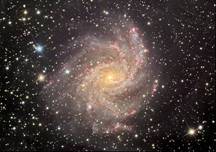Friday, December 21, 2012
Ending Superstition on December 22, 2012
The Un-pocalypse — or false Mayan “End of the World” — of December 21, 2012, is the most widespread cultural phenomenon of the year. Some joke about it, others fear it, but everyone knows about it.
There is no planet coming to destroy us, but we hold a widespread fear of the dark, unknown universe, a cosmophobia. Our reaction to apocalyptic myths reveals our true cosmic compass. What we make of the Mayan calendar doesn’t tell us anything about the Maya. It speaks volumes about us. Some look on the Maya with the same fear and superstition that pervaded the Spaniards of the 16th century. How we decode the ambiguous Mayan writings exposes in what century our mindsets dwell.
When death fails to come from the skies on Friday, I would like us to truly be 21st- century humans. If we have any doubts, make this pledge before the end of December 21 regarding the purported ends that were predicted by us (not the Maya).
“I solemnly swear that if on December 21, 2012 (Eastern Mayan Time), we are not destroyed by:
Meteors, comets, or the rogue planet Nibiru;
Super Sun storms;
Magnetic poles flipping;
The entire Earth flipping;
Earth ceasing to rotate;
Planets lining up;
An eclipse (solar or lunar);
Or Earth lining up with the black hole in the center of the galaxy,
I will be more trusting of scientists and astronomers and less taken in by superstition and doomsday charlatans.”
Let’s welcome December 22, 2012, as the dawning of a new age: an age of reason.
-
Labels:
2012,
Age of Reason,
Apocalypse,
Death Fom Above,
Doomsday 2012,
Mayan,
mythology
Monday, December 10, 2012
Know Your Seven Sisters
 This is a great time to view the Seven Sisters open star cluster in the night sky. Look high in the west for a small cloud the size of the full moon. Upon closer examination your eye can catch the individual stars in the cloud and you can start counting. 1, 2, 3, 4, 5, 6... and maybe 7 stars (if you have really good eyesight) in the cluster.
This is a great time to view the Seven Sisters open star cluster in the night sky. Look high in the west for a small cloud the size of the full moon. Upon closer examination your eye can catch the individual stars in the cloud and you can start counting. 1, 2, 3, 4, 5, 6... and maybe 7 stars (if you have really good eyesight) in the cluster.
-
These are the Seven Sisters, or Pleiades (their family name). They are the children of a Titan named Atlas (the guy that holds up the world) and a sea-nymph named Pleione. The names of the Seven Sisters are: Alcyone, Maia, Taygeta, Celaeno, Merope, Sterope, and Electra. On a clear night you can see Alcyone, Maia, Taygeta, Merope, and Electra along with one or both of their parents.
Most people with 20/20 vision can only make out 6 stars in the cluster. What happened to the 7th? One legend says that in the ancient Greek days (2500 years ago) they could see all seven. But one star suddenly got dimmer. To explain this phenomenon, the Greeks believed that one of the sisters (Electra in some stories, Merope in others) was sad and covered her face with her hands - thus shielding her beautiful light from the world.
-
With any binoculars you can see much more than 7 stars in the cluster. In total the cluster contains over 1,000 members resting about 440 light years away that were all formed from the same nebula. Click on the pictures for close-up views. Try to find them tonight and see how many you can catch.
 |
| "Seven Sisters" a painting by Helen Gerro |
Labels:
Alcyone,
astronomy,
Atlas,
Constellations,
Electra,
mythology,
Pleiades,
Seven Sisters










